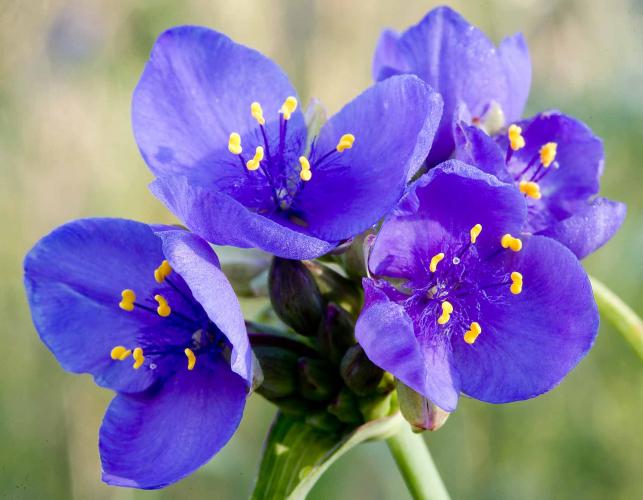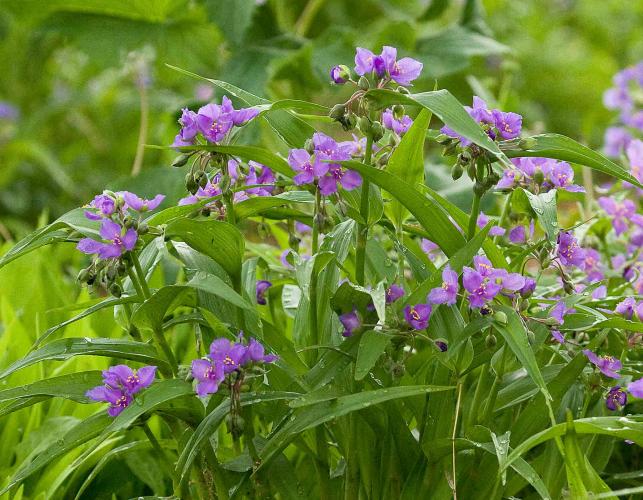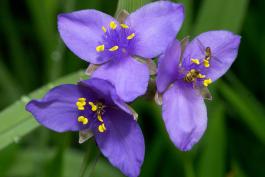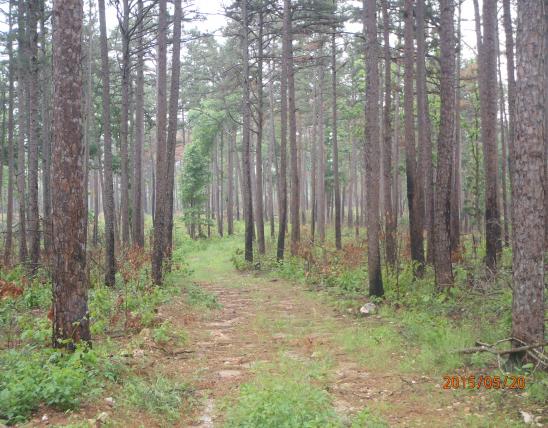
An herbaceous perennial with a straight or sometimes zigzag stem, lacking hairs or with very few hairs. Flower clusters subtended by 1 or 2 leaves similar to the rest of the leaves. Petals 3; blue, rose, purple, lavender, or rarely white; size of petals varies; flowers triangular, about ¾–1½ inches across. Stamens bearded and fluffy. Blooms May–July. Leaves about 12 inches long; narrow, folded lengthwise; bluish green, clasping stems in a thick node.
Similar species: There are 8 species of spiderworts in the Missouri flora, plus several documented hybrids that display characteristics of more than one species. Smooth spiderwort hybridizes with nearly all of them, and it is the commonest and most widely distributed of Missouri's spiderworts.
Height: to 3 feet.

Statewide.
Habitat and Conservation
Occurs in glades, prairies, and openings in moist to dry upland forests; along railroads and roadsides; also in old fields and pastures. This spiderwort grows throughout the eastern United States and is commonly cultivated as an ornamental. Ornamental spiderworts, however, are often hybrids between two species, and spiderworts in the field may be hybrids, too.
Human Connections
In addition to their place in flower gardening, spiderworts have proven useful for assessing an area's exposure to radiation, as the stamen hairs mutate and change color once exposed. This sensitivity to radiation and chemical mutagens is a property being explored for numerous applications.
Ecosystem Connections
Bumblebees and other insects pollinate this plant, and a number of herbivorous mammals, including deer, rabbit, and livestock, eat the foliage. Each flower is open for just one day. Spiderworts are closely related to the common houseplant called "Wandering Jew."








Where to See Species
The Conservation Department acquired this prairie in 1987.

























